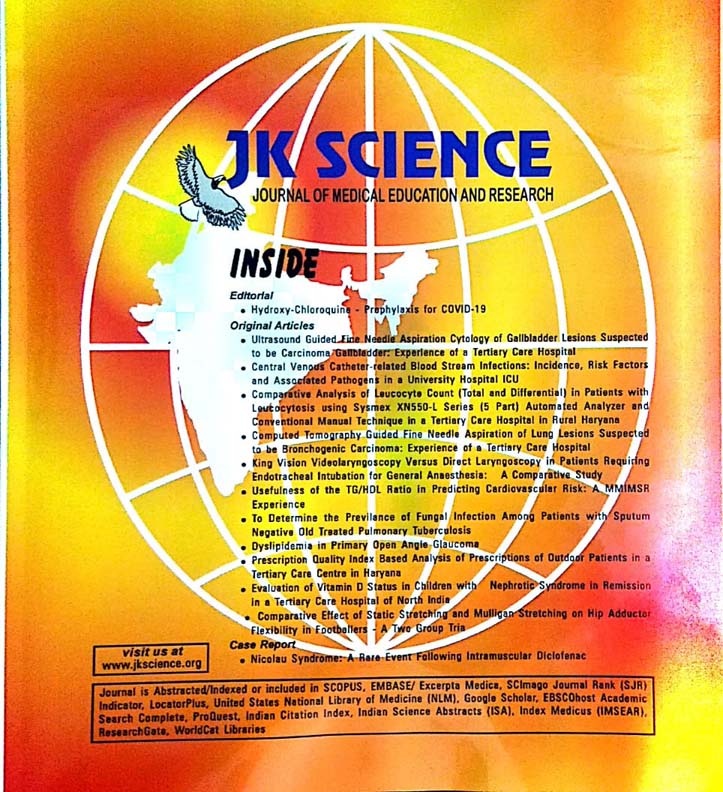Medial Pinning (Cross Pin Construct) of Supracondylar Fractures: Our Experiences with This Technique at Tertiary Care Centre
Keywords:
Baumann’s angle, Closed reduction, Flynn’s criteria, Gartland’s Type III supracondylar humerus fractureAbstract
Background: Supracondylar fracture of distal humerus is the most common paediatric fracture. Closed reduction and percutaneous Kirschner wire (pin) fixation is the standard method of managing displaced Gartland Type III supracondylar humerus fractures. Closed reduction with percutaneous pinning (CRPP) with two lateral pins is quite effective technique for management of majority of supracondylar fractures requiring fixation. However, if the fracture requires third pin for adequate stability, then the dilemma regarding the positioning of third wire occurs, with both methods having their pros and cons.
Purpose: To compare methods of fixation with regards to maintenance of reduction, neuropathy, functional and radiological outcome and to assess the role of medial pin in management of supracondylar fractures.
Material and Methods: Prospective study done in Department of Orthopaedics, Government Medical College and Hospital, Jammu from January 2019 to December 2019. Baumann’s angle recordings done at post op. as well as at subsequent follow-ups. Flynn’s criteria are used for comparing and deducing our results.
Results: Medial-lateral pinning has shown to have better outcomes than the lateral only pin construct in terms of Flynn’s criteria as well as change in Baumann’s angle.
Conclusion: With meticulous placement of medial pin; medial-lateral pinning can be used safely in management of type III supracondylar fractures with better stability and better functional and cosmetic outcome as well.
Downloads
Downloads
Published
How to Cite
Issue
Section
License
Copyright (c) 2021 JK Science: Journal of Medical Education & Research

This work is licensed under a Creative Commons Attribution-NonCommercial-ShareAlike 4.0 International License.








